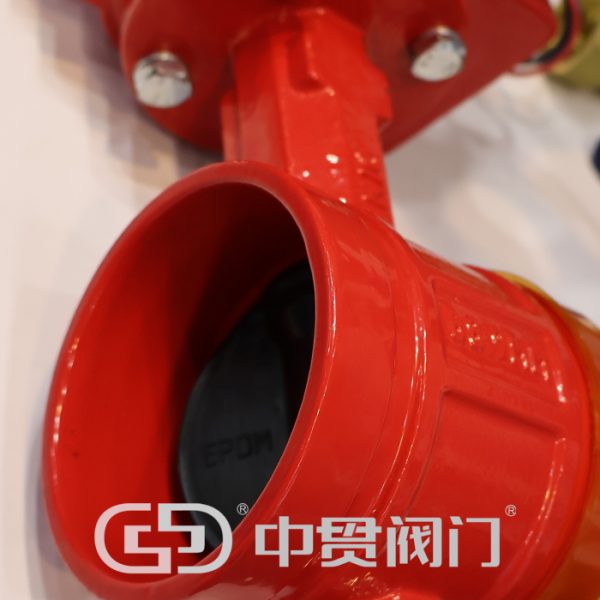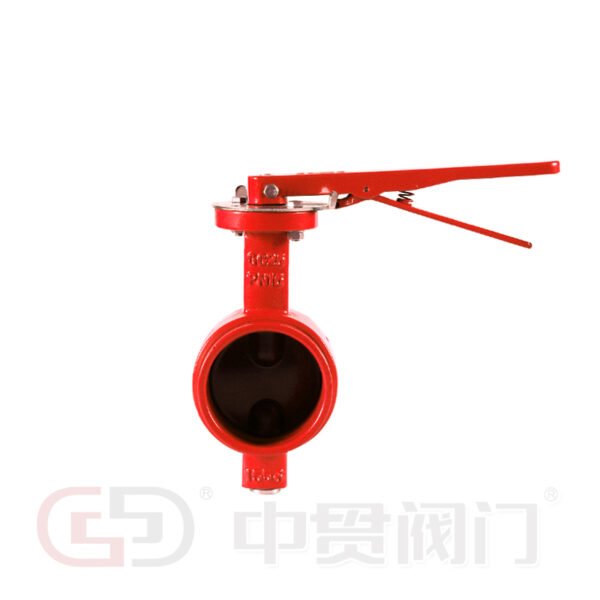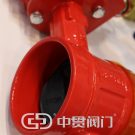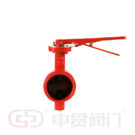Grooved Butterfly Valve
Grooved butterfly valves are seamlessly integrated into pipes using standard clamping couplings, making installation swift and efficient. This grooved end clamping system is particularly prevalent in indoor fire protection setups, renowned for its rapid and effective pipe joining capabilities. Its high degree of flexibility further enhances its appeal, offering a reliable solution for diverse installation requirements in fire protection systems.
Features of Groove End Butterfly Valves
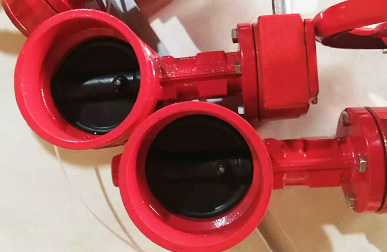
- Quick Installation: The groove end connection allows for fast and easy installation, reducing downtime and labor costs. This feature is particularly beneficial in large-scale industrial projects where efficiency is paramount.
- Compact Design: With a streamlined and compact design, groove end butterfly valves occupy less space compared to other valve types. This makes them ideal for installations in confined spaces.
- Reliable Sealing: These valves typically feature resilient seats made of materials like EPDM, NBR, or PTFE, which ensure tight sealing and prevent leaks. The sealing materials are chosen based on the media being handled and the operating conditions.
- Durable Construction: Constructed from high-quality materials such as ductile iron, stainless steel, or cast iron, groove end butterfly valves are built to withstand harsh industrial environments and offer long service life.
- Ease of Maintenance: The design of groove end butterfly valves allows for easy access and maintenance, enabling quick inspections, repairs, or replacements without extensive downtime.
Applications of Groove End Butterfly Valves
-
- Water Distribution Systems: Groove end butterfly valves are widely used in municipal water supply systems for controlling the flow of potable water. Their quick installation and reliable performance make them ideal for this critical infrastructure.
- HVAC Systems: In heating, ventilation, and air conditioning systems, these valves regulate the flow of air and water, ensuring efficient temperature control and energy management.
- Fire Protection Systems: Groove end butterfly valves are integral components of fire protection systems, including sprinkler systems. Their ability to provide quick shut-off and reliable flow control is crucial in emergency situations.
- Industrial Processes: Various industries, including chemical, petrochemical, and manufacturing, utilize groove end butterfly valves to handle different types of fluids, from corrosive chemicals to high-temperature steam.
- Wastewater Treatment: These valves play a vital role in wastewater treatment plants, where they manage the flow of wastewater through different stages of treatment, ensuring efficient processing and compliance with environmental regulations.
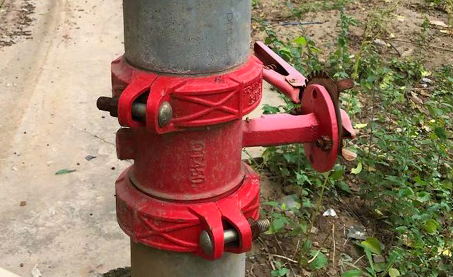
Considerations for Selecting Groove End Butterfly Valves
- Material Compatibility: The valve body and sealing materials must be compatible with the media being handled. For instance, stainless steel is suitable for corrosive environments, while EPDM or PTFE seats are ideal for chemical resistance.
- Pressure and Temperature Ratings: Ensure that the selected valve can withstand the system’s operating pressure and temperature. Exceeding these ratings can lead to valve failure and system damage.
- Size and Flow Requirements: Choose a valve size that matches the pipeline diameter and flow requirements. Undersized or oversized valves can cause flow restrictions or excessive pressure drops.
- Actuation Method: Determine whether manual, electric, or pneumatic actuation is best suited for your application. Each method has its advantages, depending on the level of automation and control needed.
- Maintenance Access: Consider the ease of maintenance and access to the valve. Groove end butterfly valves offer the advantage of quick maintenance, but it’s essential to ensure that the installation allows for easy access.
- Regulatory Compliance: Verify that the valve meets relevant industry standards and regulatory requirements, especially for applications involving potable water, food processing, or hazardous materials.
Installation and Maintenance Tips
- Proper Alignment: Ensure that the valve is properly aligned with the pipeline to prevent stress and potential leakage. Misalignment can also affect the valve’s performance and longevity.
- Torque Specifications: Follow the manufacturer’s torque specifications for tightening bolts and nuts during installation. Over-tightening or under-tightening can compromise the valve’s integrity.
- Regular Inspections: Conduct regular inspections to check for signs of wear, corrosion, or damage. Early detection of issues can prevent costly repairs and downtime.
- Lubrication: If the valve design requires lubrication, use the recommended lubricants to maintain smooth operation and prevent sticking or seizing.
- Seal Replacement: Periodically replace the valve seals according to the manufacturer’s recommendations. Worn seals can lead to leaks and reduced performance.
- Training: Ensure that personnel responsible for valve operation and maintenance are adequately trained. Proper handling and maintenance practices can significantly extend the valve’s service life.
Conclusion
Groove end butterfly valves offer a reliable, cost-effective, and versatile solution for fluid control in various industrial applications. Their quick installation, ease of maintenance, and durable construction make them a valuable asset in systems ranging from water distribution to chemical processing. By understanding the features, benefits, and applications of groove end butterfly valves, and considering the key factors for selection and maintenance, industries can optimize their operations and ensure long-term reliability and efficiency. Whether you’re designing a new system or upgrading an existing one, groove end butterfly valves are a smart choice for effective fluid control.
